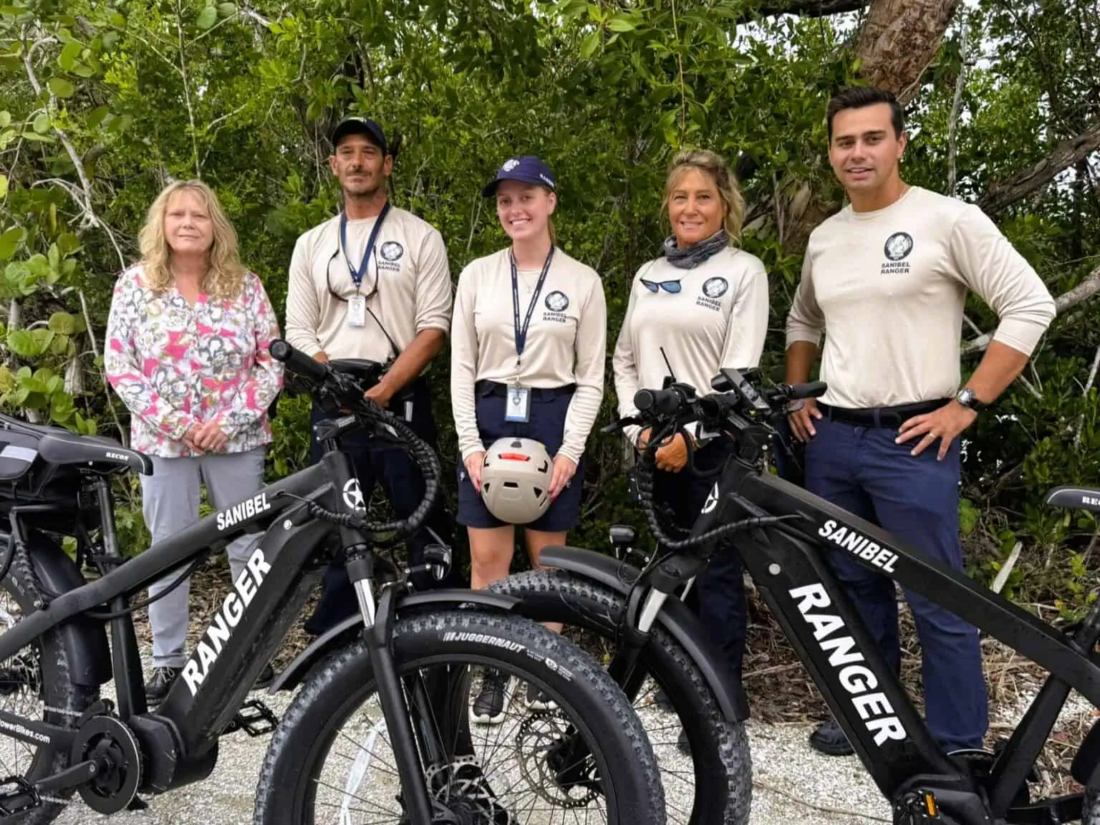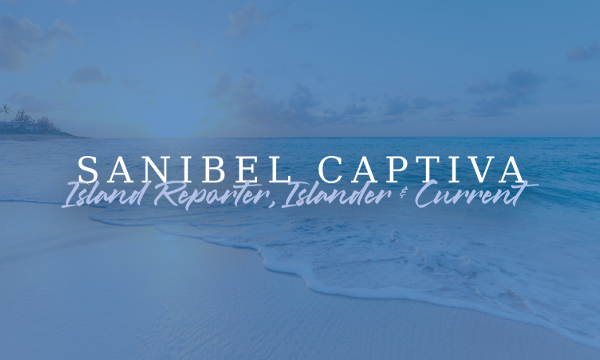1 / 3

SANIBEL-CAPTIVA CONSERVATION FOUNDATION
Sanibel Sea School Director Shannon Rivard leads a talk on identifying marine creatures at Bowman’s Beach on Sanibel.
2 / 3

SANIBEL-CAPTIVA CONSERVATION FOUNDATION
Sanibel Ranger Brannan Brouse discusses collaboration with research scientist Rick Bartleson at the Sanibel-Captiva Conservation Foundation’s Marine Lab.
3 / 3

CITY OF SANIBEL
The city’s Sanibel Rangers.
[expand]
close
Furthering its partnership with the city of Sanibel, the Sanibel-Captiva Conservation Foundation (SCCF) recently hosted the Sanibel Rangers, along with other city staff, for a series of four environmental training sessions.
“The city of Sanibel and SCCF have always been close partners, and we’re all more effective when we’re working together to enhance the island’s sanctuary character,” SCCF Adult Education Director Jenny Evans, who organized the sessions, said.
The main objective was to educate the five rangers, who serve as ambassadors of stewardship and safety. In addition to the rangers, who are non-sworn personnel at the Sanibel Police Department, there were eight attendees from public works, natural resources, planning, and the city manager’s office.
The trainings were held at the SCCF’s Native Landscapes & Garden Center, headquarters and Marine Lab, as well as on the beach.
“As we were developing the curriculum, it occurred to me that many city employees could benefit from a greater understanding of the island’s environment. In addition, making connections between SCCF and city employees is just as important; knowing our local resources helps everyone to share information and work in greater alignment,” she said.
Topics covered at the garden center included general Sanibel ecology and its conservation history, Coastal Watch restoration efforts and its Adopt-a-Mangrove program, marsh ecology, native plants, and landscaping for wildlife.
At the headquarters, the SCCF’s environmental policy team discussed water quality, and the greater Everglades ecosystem and its restoration progress, as well as an overview of the dynamics between Lake Okeechobee, the Caloosahatchee River, and estuary. City employees also learned about SCCF preserve lands, land management, wildlife habitat restoration and terrestrial turtles through presentations by the wildlife and habitat management team.
At Bowman’s Beach on Sanibel, the SCCF’s coastal wildlife team and a Sanibel Sea School educator led an informative talk on sea turtle and shorebird biology, along with a beach walk to identify common things found in the wrack line.
At the Marine Lab, city staff learned about water quality monitoring through the River, Estuary, and Coastal Observing Network (RECON), as well as water quality research, red tide monitoring, mangrove identification and oyster restoration.
As an immediate outcome of the training, the rangers have started assisting the Marine Lab with sampling Gulf waters for red tide monitoring.
“Since we are out on the island’s beaches all day, every day, from Blind Pass to the lighthouse, lending a hand with red tide sampling is a logistical and organic fit as the Sanibel Rangers become more integrated into the community,” Ranger Frank Nero said.
The SCCF noted that as of Oct. 8, the red tide counts were zero.
SCCF research scientist Rick Bartleson, Ph.D., has also offered the rangers the opportunity to help keep track of macroalgae on beaches and to check RECON sensor data for chlorophyll.
“‘Is it safe to swim?’ is one of the most common questions we field from beachgoers,” Nero said. “While we have the tools to give informed answers, it will be great to also be on the ground level when things have the potential to evolve into a red tide situation.”
Aside from educating the public on environmental stewardship, the rangers also promote safe and courteous use of the island’s Shared Use Path system.
“The rangers’ training sessions with SCCF allowed us to broaden the scope of our own education and, in so doing, prepared us to answer both the general and in-depth questions we receive from residents and visitors each day,” he said. “Our goal is to be the friendliest people in the island’s parks and beaches, a reference point for people looking to learn more about Sanibel.”

